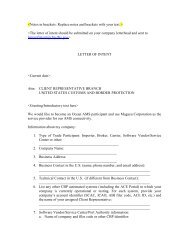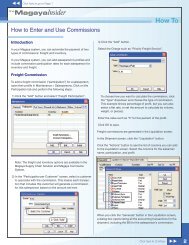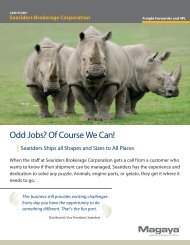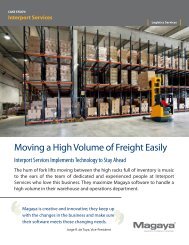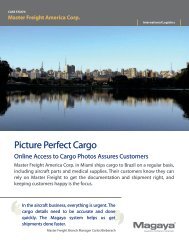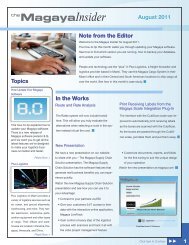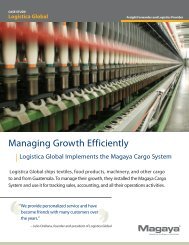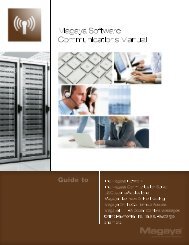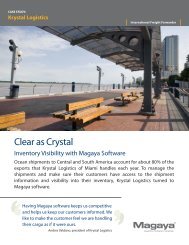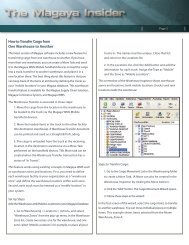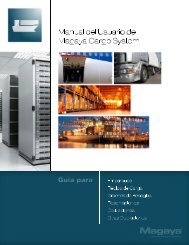Magaya Software Accounting Manual
Magaya Software Accounting Manual
Magaya Software Accounting Manual
You also want an ePaper? Increase the reach of your titles
YUMPU automatically turns print PDFs into web optimized ePapers that Google loves.
ADD TO THE CHART OF ACCOUNTS<br />
• Expense: Used to define what you are spending money on.<br />
• Cost of Good Sold: Use this to determine the cost of the items you<br />
sell.<br />
• Bank: Use this account for checking and savings transactions,<br />
money market accounts and petty cash.<br />
• Undeposited Funds: Money you hold to deposit later.<br />
• Fixed Assets: For equipment or furniture that will not be converted<br />
to cash within one year.<br />
• Other Assets: Use this account designation for any asset that cannot<br />
be classified as Fixed or Current.<br />
• Other Current Assets: For notes receivable that are due within one<br />
year, inventory value, etc.<br />
• Long Term Liability: Accounts that are due over a long period of<br />
time such as a mortgage, over one year.<br />
• Other Current Liability: Due within one year. Examples are sales tax.<br />
• Equity: The net worth of the company.<br />
• Credit Card: Create one “Credit Card” account per card to track<br />
business expenses paid for with the credit card. (You will also need<br />
to add the credit card company as a Vendor in the Maintenance<br />
folder.)<br />
3) Enter the account name and number.<br />
4) Select a parent account as needed. This allows for grouping accounts in<br />
reports (such as all freight accounts grouped together or all documentation,<br />
etc.)<br />
5) Options: Add any notes as needed. The “Inactive” box is available if you<br />
do not want to use this account in the future.<br />
21




